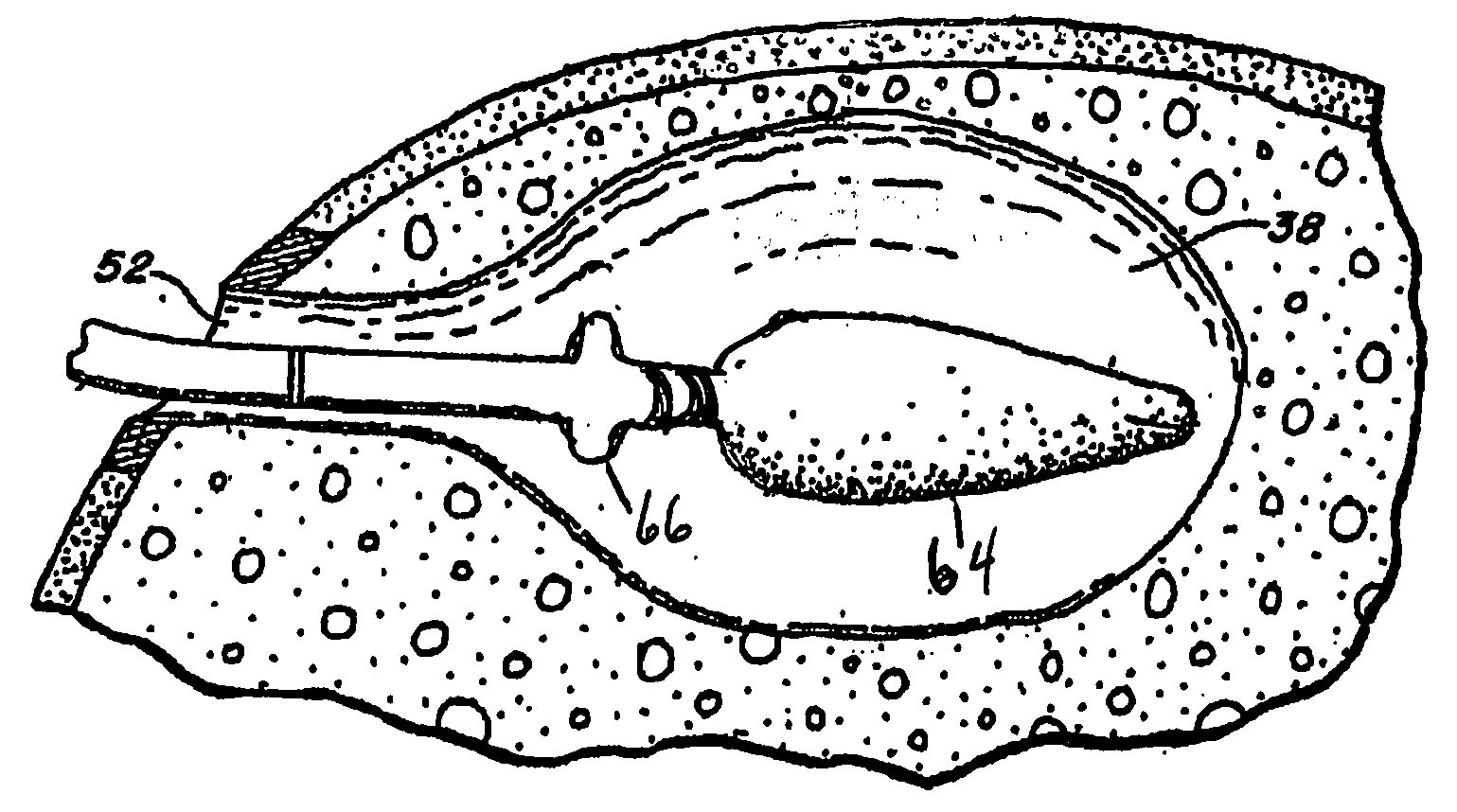Tissue positioning systems and methods for use with radiation therapy
- Summary
- Abstract
- Description
- Claims
- Application Information
AI Technical Summary
Benefits of technology
Problems solved by technology
Method used
Image
Examples
Embodiment Construction
[0037] The present invention relates to methods and apparatus for controlling the proximity of a radiotherapy source to sensitive tissue. Ideally, radiation therapy makes use of the inherent difference in radiosensitivity between tumor cells and the adjacent normal tissues cells to destroy cancerous tissue while causing minimal disruption to surrounding normal tissues. At high doses of radiation, the percentage of exposed cells that survive treatment decreases with first-order kinetics in proportion to increasing radiation dose. With increasing cell death comes increasing risk of necrosis or tissue death in healthy tissue that is treated with a high dose of radiation.
[0038] Accordingly, the present invention provides a spacing member, and methods of use for positioning a radiotherapy source, such as a radiation source within a brachytherapy device, at a distance apart from sensitive tissue. The instrument is effective to limit the amount of radiation that comes into contact with th...
PUM
 Login to View More
Login to View More Abstract
Description
Claims
Application Information
 Login to View More
Login to View More - R&D
- Intellectual Property
- Life Sciences
- Materials
- Tech Scout
- Unparalleled Data Quality
- Higher Quality Content
- 60% Fewer Hallucinations
Browse by: Latest US Patents, China's latest patents, Technical Efficacy Thesaurus, Application Domain, Technology Topic, Popular Technical Reports.
© 2025 PatSnap. All rights reserved.Legal|Privacy policy|Modern Slavery Act Transparency Statement|Sitemap|About US| Contact US: help@patsnap.com



